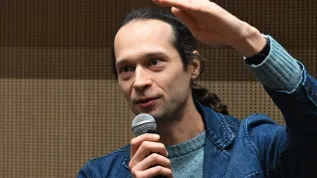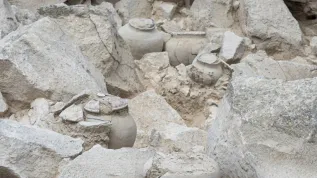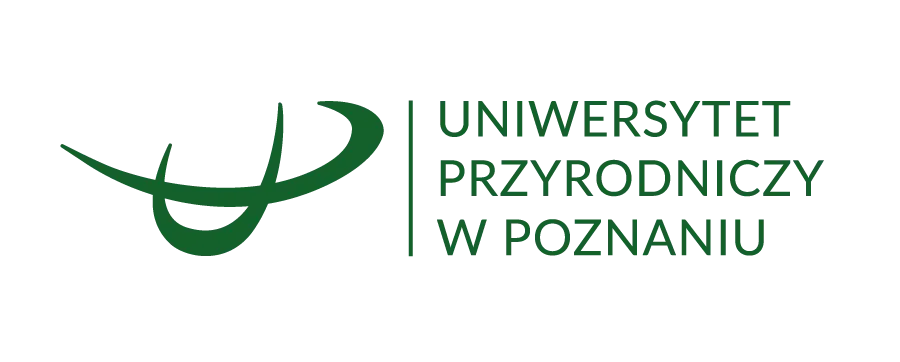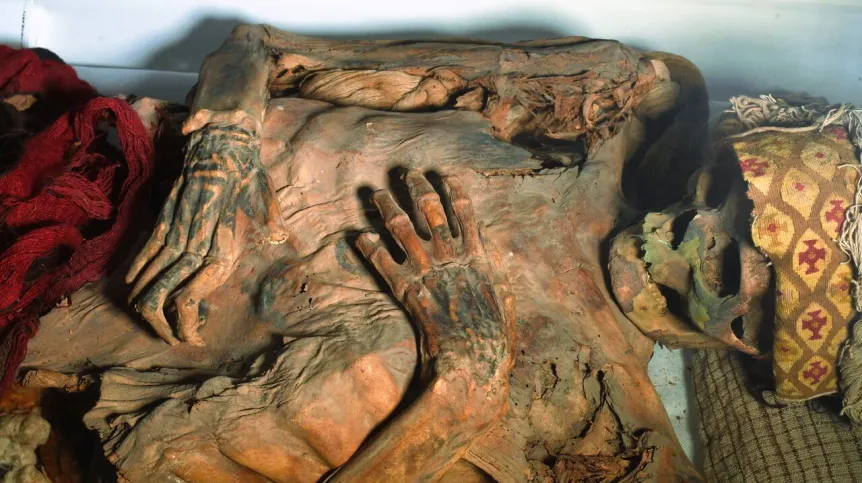
Precision of pre-Columbian tattoos often exceeded modern tattooing techniques. The thinnest lines were probably made with a single cactus needle or sharpened animal bone, an analysis of over 100 tattooed human remains of the Chancay culture has shown.
The first and most thoroughly examined mummified human remains with preserved pre-Columbian tattoos come from a representative of the Moche culture elites. This woman is known the 'Lady of Cao'.
'Based on this research, the general view was adopted that tattoos were mainly reserved for representatives of the higher social classes. In reality, they were relatively common throughout pre-Hispanic South America', says Judyta Bąk from the Faculty of History of the Jagiellonian University.
Pre-Columbian tattoos have been preserved to a varying degree, from perfectly visible, clearly outlined patterns to almost completely erased, barely noticeable traces.
'Many factors affect their condition. The process of creating tattoos certainly plays an important role, including the precision of the patterns and the used pigments, which could have affected their durability and resistance to degradation processes. Another important aspect is the time that has passed since the tattoo was made: the older the tattoos, the greater the risk that they have been largely erased by the impact of natural biological processes and environmental conditions. Additionally, post-mortem changes and the conditions of storing the remains have a key impact on the preservation of the skin and the visibility of the pigment', the researcher describes.
The question of how to obtain original details of tattoos, as an important element of pre-Columbian culture, has long bee the focus of researchers. Ethnologist and archaeologist Judyta Bąk took part in an international project that analysed the custom of tattooing the body in pre-Columbian South America. The paper on this topic was published in the journal PNAS.
The analyses were carried out on mummified remains of members of the Peruvian Chancay culture. These remains are stored in the Arturo Ruiz Estrada Archaeological Museum at the José Faustino Sánchez Carrión National University in Huacho, Peru.
The researchers used laser-stimulated fluorescence (LSF), an innovative imaging technique. This is the first application of LSF in the analysis of ancient tattoos.
'To date (...) 100 mummified remains from the Chancay cultures and several from the Paracas, Lima and Ychma cultures have been analysed with the LSF method', the researcher says.
The Chancay culture developed along today's central coast of Peru, between around 900 and 1533 CE. The Chancay society established trade relations with other regional cultures and was eventually absorbed into the Inca Empire.
Judyta Bąk explains that in the research on the Chancay culture, Pieter van Dalen and Alfredo J. Altamirano attempted to link tattoos to specific social classes. The results of their research indicate that having tattoos in this community was mainly associated with a group of female healers.
One of the most characteristic examples of decorations examined in the project with the participation of Judyta Bąk are those preserved on the remains of the 'tattooed man from Huacho'.
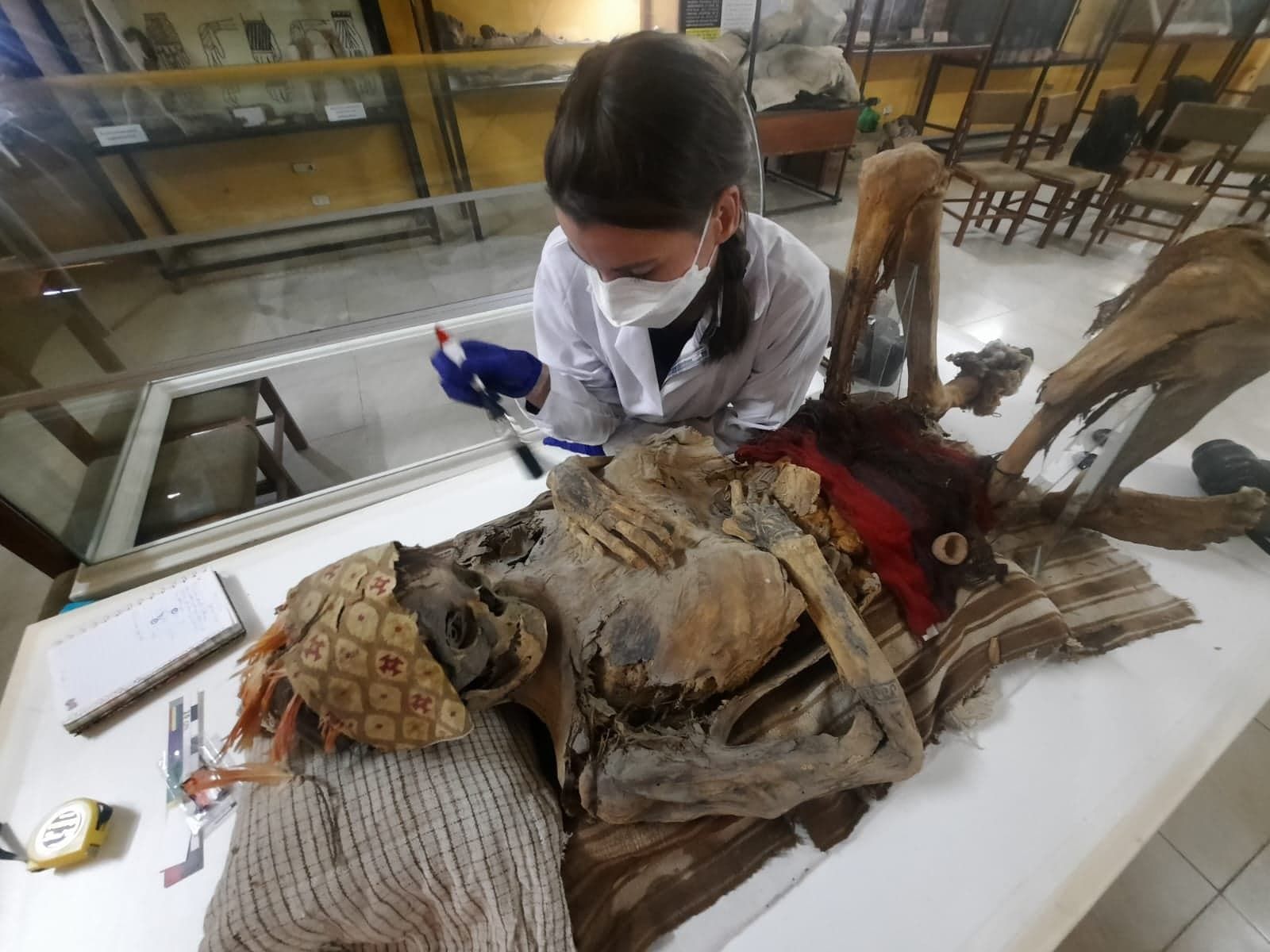
'Numerous tattoos on the man's remains cover almost the entire surface of his body. These patterns include both simple shapes and more complex figurative scenes. Comparing the tattoos of the man from Huacho with other examples from the Chancay culture, one can assume that their number and complexity indicate the special role of this man in the social structures of this culture', Judyta Bąk emphasises.
'The LSF method allows to obtain extremely detailed images of tattoos preserved on mummified human skin. The basic mechanism of this technology is the use of fluorescent emission, which allows to selectively illuminate the skin surface, causing it to turn white. As a result of this process, it is possible to see details of tattoos that would be difficult with traditional research methods. LSF allows to trace original tattoo lines, their structures, as well as the level of advancement of execution, revealing the details and complexity of even the smallest patterns', the researcher describes.
This technology enabled the researchers to see extremely thin tattoo lines with a width of only 0.1-0.2 mm. Their level of detail and precision turned out to be equal to or - in some cases - even higher than in the case of paintings on ceramics, fabrics and rock art. This suggests that the representatives of the Chancay culture put special effort into making at least some of their tattoos. These designs compete with, and in some cases even surpass, modern tattooing techniques in terms of precision.
The studied tattoos most often depict geometric and zoomorphic patterns. Most of the samples contained tattoos in the form of amorphous spots with blurred edges. In turn, thin lines were visible only on some of the mummified remains.
According to the publication, the lines with a width of 0.1 to 0.2 mm mean that each dot of ink was placed by hand with great precision. It can be assumed that this technique required a sharper tool than a standard tattoo needle. It was probably a single cactus needle or sharpened animal bone.
'Tattoos are among the most complex forms of art discovered in the Chancay culture to date, they were part of the cultural and aesthetic core of this culture. The study shows a higher level of artistic complexity in pre-Columbian Peru than expected', the researcher emphasises.
Ewelina Krajczyńska-Wujec (PAP)
PAP - Science in Poland
ekr/ agt/

